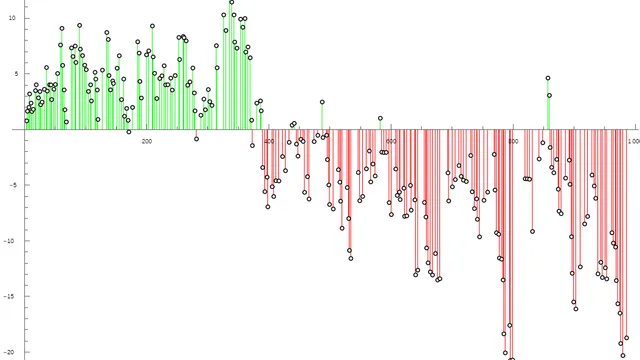Revisiting Number Theory and the Impossible Puzzle
A mathematical journey inspired by a classic sum and product puzzle. I look at solutions to the problem, and how they relate to large factors of even larger integers. Much is said about Fermat and Mersenne numbers. I look at patterns that break down, and shed new light on a topic that I previously explained in #some2. For fans of ominous horizontal scrollbars.
Analytics
Comments
6.9
mysterious
7.1
This was a fanatic article and I greatly enjoyed it. I was not familiar with your previous post, but was able to orient myself and follow your path. And my goodness, what an amazing path that was. Honestly speaking, we went down routes I didn't see coming and was pleasantly surprised.
However, that does bring me to my main point of criticism in that, as someone who didn't read your post from last time, I felt lost at the beginning. Mostly because I didn't realize your post from last time was a near required reading to really understand what going on in the beginning of the post. After I sunk my teeth into your first post, the second one really came life more. Without that distinction, I fear it can really confuse a reader and cause them to browse away instead of find your old post and reading that first. However, admittedly, the topics discussed in this post are pretty high level and I would be surprised to see an average person reading this. So it might be fair to assume the target audience would do some more digging.
Still though, I don't want to subtract from the fact that I can tell how much effort went into this and how much it was enjoyed. I'm planning to reread these at a later point to see if I can tease anything out. Thank you so much for your submission :)
7.1
An index would be helpful
6.6
This is definitely cool. Thanks for sharing this with the world!
In the intro sections, the one part where I really had to stop and think was about how restricting to 5 mod 6 boosts probability by an overall factor of 3. Which I quickly understood to be correct, but it wasn't obvious to me where the 2 in 3/2 came from. I think I just read the previous paragraph too quickly to absorb it. After I went back and read that paragraph more deliberately, I was good to go.
I am curious whether we can really expect that the probabilities that each of the four numbers a, s-2^k*a, etc. is prime are independent. Although if I understand correctly, you were using this assumption and the 10^14 figure more as a guide to investigation, and not drawing conclusions based on it.
I must admit I started skimming as of the "k = 1" section. :) I was interested to understand how you determined that some mod classes have a final, largest solution, but this does seem like a rather advanced result in number theory so I'm not surprised I wasn't able to absorb it within the time I was willing to commit to grading and feedback.
5.7
Very interesting topic! However, the length of the article is a bit on the longer side. I would see if you could reduce the amount of content, while still preserving as much of the results as possible.
2.9
I found the post quite unclear. There were several moments when it was not clear what you are doing and it was almost never clear why you were doing it. The relationship with prime numbers you brought up seemed to come out of nowhere and I didn't see the motivation for many of the questions you were asking.
6.7
This was highly novel and interesting from a simple example. I had a hard time following at many stages, though, and lost track often of the "why" as well as the "what". Well done, maybe a better mathematician than me can give more actionable feedback.
